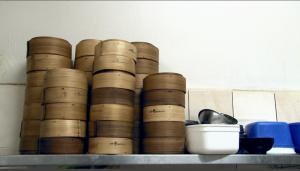Cactus
I love Cactus. I got to see it in it’s rougher stages in class and it was nice to see the final cut at the screening. Hannah’s Grandpa is such a likeable character who has clearly led an extremely interesting and diverse life. There were a couple of things tweaked between the screenings and I think the film has improved for them.
I was left wanting to know more about Alec after he glanced across several aspects of his life and even had some minor interest in the Saint Kilda Cactus and Succulents club. How many such clubs exist and who knew there was such a thriving community. This was a simple, heartwarming and interesting story. The pacing was spot on and left me satisfied but curious.
Waves
Waves was a simple story, told well. I thought the Cinematography was wonderful and it was an absolute joy to watch. The very start of the documentary when the camera quality was ordinary had me thinking the film was going to be underwhelming, however I think it was a very clever move because it made the actual body of the film so spectacular. The editing together was really great and I think did a great job of capturing that draw the ocean holds on man.
Mosaic
Mosaic is a very timely film. In an Australia that (politically) suffers so much from the fear of the other it is great to see stories like this. The participants were such engaging, interesting characters who are valuable as individuals as well as how they enrich the broader community with the culture and personality they can inject. I also found the technical aspects of Mosaic great. The cinematography was certainly cinematic and sound quality great.
Chinese Whispers
I found the concept of this documentary really interesting and will be looking out for the episodes still to come. I like that you took the approach of teasing us with the broader concept but having the sense to focus on only one story for the purpose of this short. I also thought the production quality was really great; excellent sound and camera work.
It did take a little while for the concept to properly click and i’m not sure if that’s an issue or not. It certainly didn’t diminish my enjoyment but perhaps was a bit distracting at some points.





